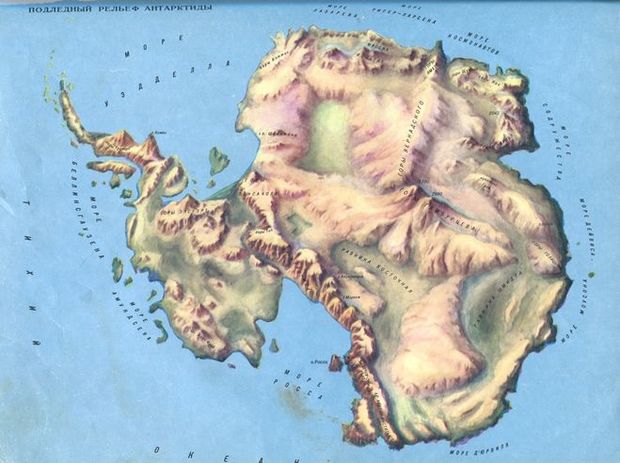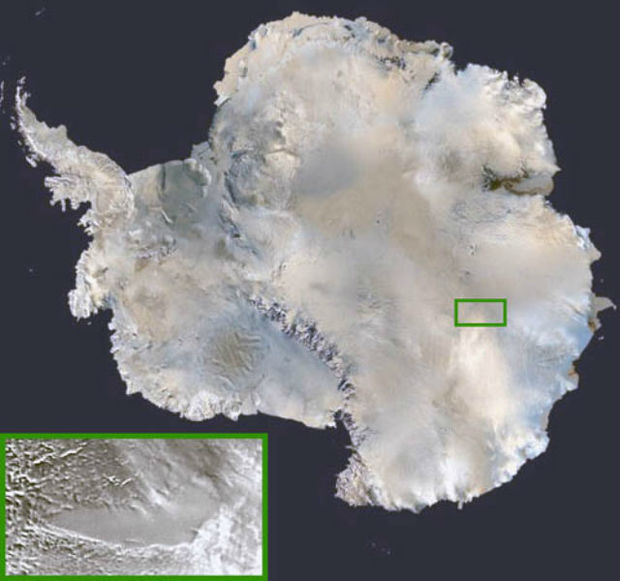Andrey Salamatin’s lecture: how to study Earth's climate by Antarctica ice samples
Mathematics shows us how big human influence is on temperature change in Antarctica and if there is any at all
Realnoe Vremya continues to publish a series of lectures given by professors from different fields of knowledge within the walls of the Kazan Federal University. This lecture was given by Andrey Salamatin, Professor at the Department of Applied Mathematics of the Institute of Computational Mathematics and Information Technologies at the Kazan Federal University. He told about how the study of ice in Antarctica helps to understand the climate change on the Earth. The lecture was called 'What does mathematics do in Antarctica?'. Read the details in the material of Realnoe Vremya.
The ice is melting, or Lake Vostok in Antarctica
The lecture of Andrey Salamatin was held in the framework of the thematic popular science intensive courses 'PRO Science in KFU' and called 'Night limit'. It was dedicated to Mathematics and IT in honour of the Year of Lobachevsky at the Kazan Federal University. The professor introduced the students to recently discovered largest subglacial Lake Vostok in Antarctica. The attendees could see its photographs and location on the map on the slides. The lecture virtually moved them to the icy continent.
The territory of Antarctica is entirely covered with ice. If the ice is melted, one can see the geographical position of heights and low places of this cold continent. Ice presses Antarctica very strongly, if it was removed, then the mainland would rise. In those places where there was a lowland, a thickness of ice is greater than in the mountains.
Andrey Salamatin proposed to look at Antarctica from space in the shadow version. The slide shows the eastern part of the ice continent, which is considered a Russian part. There are located main Russian stations Mirny and Vostok, named after the sloops of the first Russian Antarctic expedition of Bellingshausen and Lazarev in the waters of the Southern Ocean.

Russia conducts its researches in this area of the continent. In 1995-1996, when satellites were launched over Antarctica, they could see an unusual spot — an absolutely flat place on the map. Such platform can be observed in winter on Kazanka River, if you go on the ice. The presence of the melting point of ice has long been predicted in this place where the ice meets rocks.
''You all understand that inside the earth is hotter than outside. The heat, like in any kitchen, goes from a more highly heated place to a cold one. It turns out that a heat flux always comes to the surface from the earth. If you cover it over with material that insulates heat well, then the temperature begins to rise here,'' Andrey Salamatin explained the occurrence of ice melting in Antarctica. All forecasts showed that ice is melting in the found flat area of the continent at a depth of 4 km. Although on the surface of the glacier the average temperature reaches about 56 degrees, in winter the temperatures drop to 85 degrees, and in summer to -50 degrees. These temperatures are almost not felt because the wind doesn't blow.
As a result of targeted research in the area of flat space there has been found not just a melting point under the ice but a huge lake. It is about 280 km in length and about 80 km in width. The depth of the pool beneath the ice ranges from 120 meters in the northern part to 1 km in the southern part. This lake is called Vostok.
What climate changes the ice in Antarctica predicts
Andrey Salamatin shared with the results of radar sounding of the surface and subglacial topography of the lake. He also said that the polar explorers drilled ice from the surface to the lake two times and proved its existence. The scientist showed a slide (13.43 min) with results of core sample analysis (core is the sample of naturally occurring substance extracted from wells through specially designed for this kind drilling — editor's note). He explained that dust in the ice is marked with yellow colour. In cold season the amount of dust is millions of times higher than in warm season. The red colour on the chart shows the number of deuterium.
''We say that water is H2O but is not exactly true. In fact, there are several variants of hydrogen and several variants of oxygen. There is heavy hydrogen called deuterium, it is present in water. Deuterium is heavy and its molecules are passive. They are liberated in the form of vapor much less from the ocean, and they much faster settle to the bottom,'' Andrey Salamatin explained.

Therefore, if the climate is characterized by low temperature, then less deuterium drift to the center of Antarctica, but in warm season there is a lot of deuterium. By studying cores from Lake Vostok, it is possible to find out what was the climate millions of years ago and predict how it will change now.
The layers of ice are visible on the photo of radiolocation and slip areas. They are of the same age. But it is unknown what age and at what depth. The data of Lake Vostok is unique, they say that the ice is not uniform and that different layers have different amount of dust. In those layers where there is more dust the ice is softer. Illustrating where there are soft layers of ice was possible thanks to the modelling. They repeat the layers that contain dust, but at their center there have not developed soft layers yet.
Andrey Salamatin compares such structure with a cake, layers of which are coated unevenly. If you move this cake, then the layers with cream will start running, but the layers with the dough will not be deformed. The ice is flowing exactly the same. This helped to explain the paradox: it would seem how the ice could flow. Ice was considered to be a nonlinear substance, and it is true, adds Andrey Salamatin. However, if you load it slightly, the ice starts to behave like a linear material. The closer it is to the bottom of the lake, the more soft layers of ice there are.
Scientists decided to measure the temperature in the well, which was drilled on the surface of Lake Vostok. Thank to deuterium data they already know that some time ago it was cold, but they didn't know what was the temperature, and most importantly, when. Scientists made charts climate change in the past and compared them with the present. Andrey Salamatin concluded that even if the climate is not influenced by human activity, then, according to corn data from Llake Vostok, the atmospheric warming would have begun anyway, and only in 200-300 years on the Earth it will become colder.